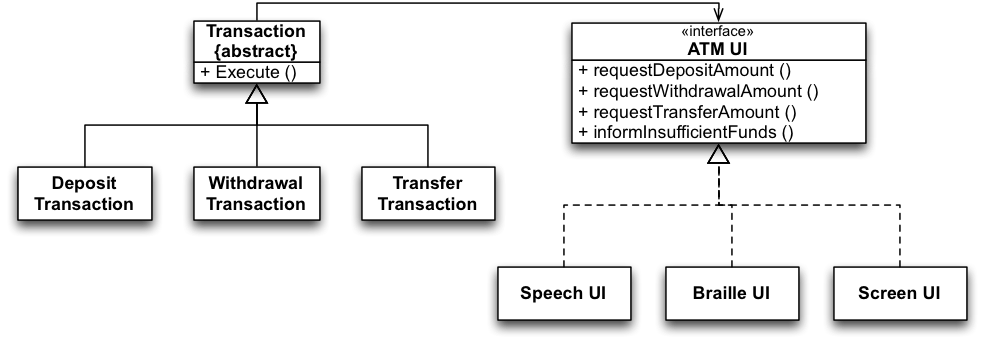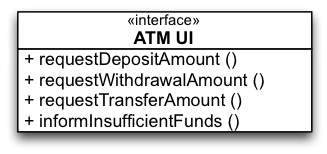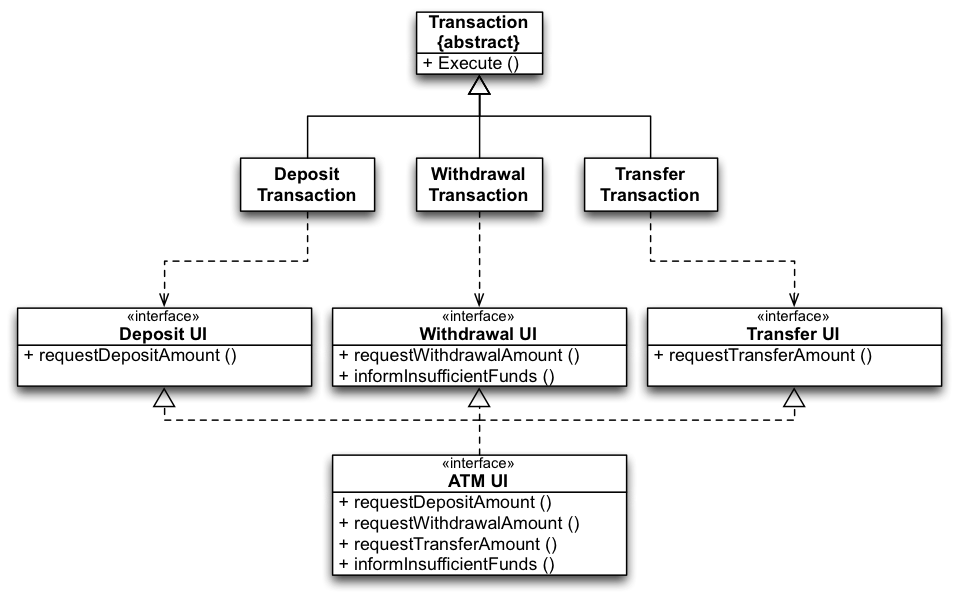Interface Segregation Principle (ISP)
Interface Segregation Principle
Clients should not be forced to depend on methods that they do not use.
Introduction by Example
Introduction by Example
Consider the development of software for an automatic teller machine (ATM):
- Support for the following types of transactions is required: withdraw, deposit, and transfer
- Support for different languages and support for different kinds of UIs is also required
- Each transaction class needs to call methods on the GUI
E.g., to ask for the amount to deposit, withdraw, transfer.

Assessment:
ISP tells us to avoid this. Each transaction class uses a part of the interface, but depends on all others. Any change affects all transactions.
A Polluted Interface

ATM UI is a polluted interface:
- It declares methods that do not belong together.
- It forces classes to depend on unused methods and therefore depend on changes that should not affect them.
- ISP states that such interfaces should be split.
The Rationale Behind ISP
The Rationale Behind ISP
When clients depend on methods they do not use, they become subject to changes forced upon these methods by other clients.
This causes coupling between all clients.
How does an ISP compliant solution look like?

An ISP Compliant Solution

Proliferation of Interfaces
Proliferation of Interfaces
Try to group possible clients of a class and have an interface for each group.
But:
Segregating interfaces should not be overdone!
If you overdue the application of the interface segregation principle, you will end up with 2n-1 interfaces for a class with n methods.
Recall that, in general, a class implementing many interfaces may be a sign of a violation of the single-responsibility principle.
Takeaway
Takeaway
Clients should not be forced to depend on methods that they do not use.


